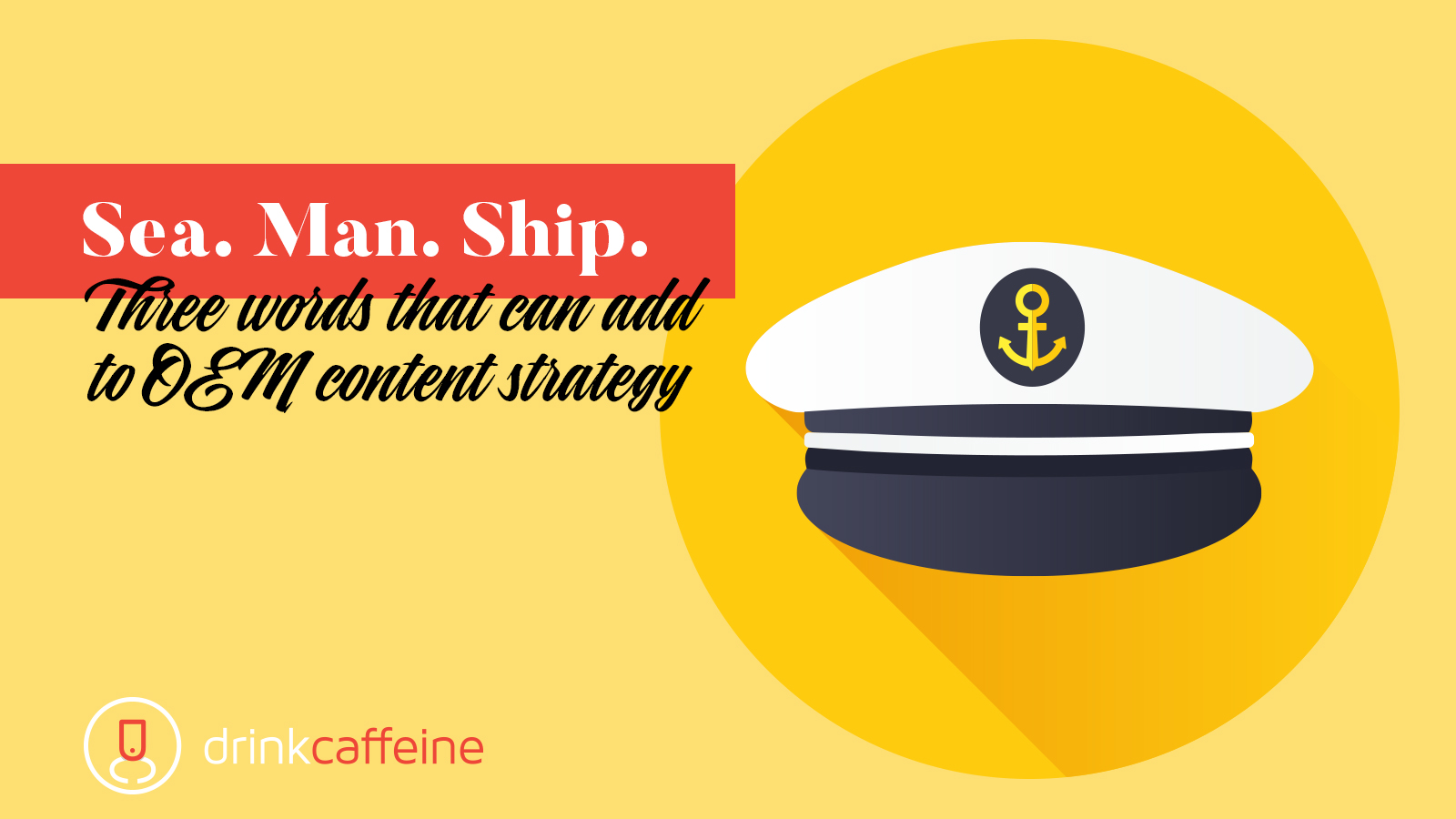Boat and equipment OEMs are missing a content marketing opportunity
In our collective experience with major brands in the boating industry (Hinckley, Lewmar, Raymarine, Sabre, and Ritchie Navigation to drop a few names), we learned this: Emphasizing control tends to be good for sales and good for the brand.
That’s why we scratch our heads at the lack of content regarding seamanship from major sellers of new boats and aftermarket equipment. After all, boating (for many) is still at some level a means of satisfying ego needs: independence, self-reliance, solitude, social recognition, etc. Here’s a summary of perspectives and lessons learned from 3 marine companies.
The Hinckley Lesson
During our launch of a Hinckley Picnic Boat it became clear from customer intercepts and deep-dives with sales guys that Hinckley’s jet boat technology was cool, but prospects were wary of it delivering “too easy” and “soft” an experience.
The point: Male boaters want advanced technology so they can feel and appear to be authentically in charge of their craft. Therefore, Hinckley’s propulsion system needed to be sold as so advanced that the owner can socialize while driving it.
The Ritchie Navigation Lesson
Magnetic compasses aren’t sexy – not in the face of advanced navigation technology. But primary research among Ritchie customers (end users, not OEMs) revealed that the idea of being prepared was essential to the emotional completeness of the experience of being on the water.
Actions: We produced how-to content on compass calibration and compensation, dead reckoning techniques, and “real-time navigation” involving magnetic compasses . And boaters ate it up.
They Raymarine Lesson
When Raymarine was launching its latest multifunction navigation display, we did primary research among Raymarine loyalists around the country.
The focus was on product usage but we were probing to understand the emotional states of mind that the product triggered.
[Wonky research point: The key was to ask “projective” questions that asked the subject to respond hypothetically to situations, rather than out of personal feeling or experience. This enables a tough guy to volunteer sensitive input without being emotionally exposed in an in-depth interview.]
The results: Raymarine multifunction display users liked calling up individual navigation screens for friends on board, but what they truly valued was the ability to overlay multiple screens with the touch of a button (chartplotting/radar, radar/weather, etc). Again, this was gratifying for the owner because it underscored his situational awareness and affirmed his control.
Advice: Get into your targets’ emotional states
Buying a boat or even aftermarket gear involves an emotional interaction as well as analytical and financial ones.
This is an opportunity for boat brands to transact with buyers on a meaningful level by supplying solid content and a way of understanding the emotional benefits of buying.
In our view, that’s seamanship. Contact us anytime.


